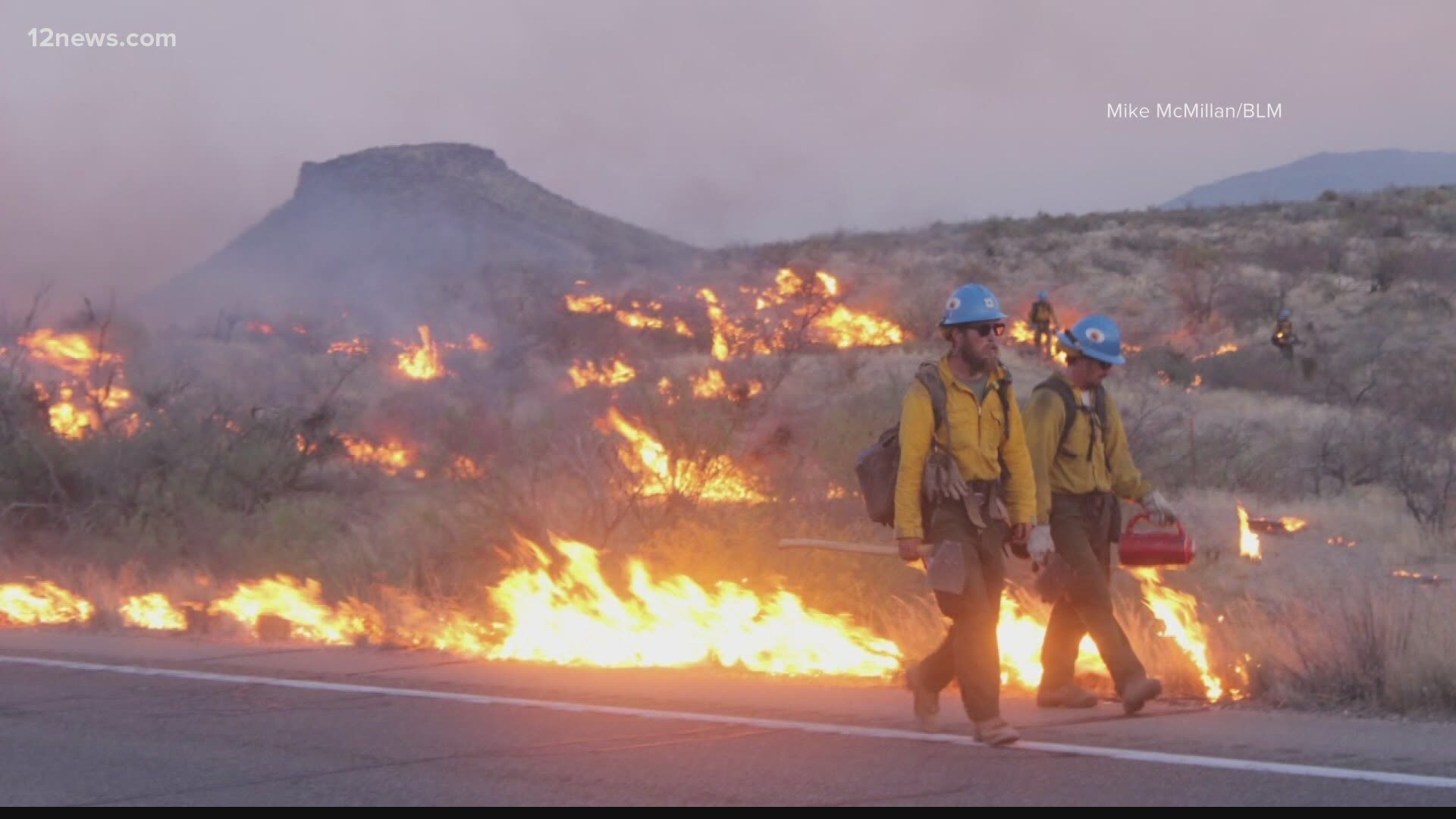The drought is making a difference in how firefighters are taking on wildfires. And not in a good way.
John Truett, state fire management officer for Arizona said strategies for battling the fires are becoming harder to do, including dropping water, because of drought.
“These fires are spreading anywhere from four to five miles a day,” Truett said.
Water couldn’t be taken out of San Carlos Reservoir
According to Inciweb’s fire maps, the San Carlos Reservoir off Highway 70 is close to the Telegraph Fire.
However, Truett said crews were not able to take water out of the reservoir Thursday.
“What we were being told us historic low, very, very low water levels. We did not want to compromise that at all or contribute to that problem,” Truett said.
Truett said water in other areas they might use to get water from to drop over top of fires is also difficult to find.
“The seasonal ponds or even some of the stock ponds, they’re dry. So our pilots are really having to search long and far to find water sources,” Truett said.
Other firefighting strategies also aren’t as effective on the fires
A lack of rain has also made for dry and thick vegetation where fires are burning in Arizona, which gives fires more fuel to burn.
Truett also said the red fire retardant crews usually lay down isn’t being as effective as it should be.
“When that retardant goes in it, it has to penetrate that vegetation and get all the way to the ground. But a lot of times it's not getting to the ground because of the thickness of the height than that and the old-growth of the vegetation,” Truett said.
Truett said Mother Nature isn’t helping either. Truett gave an example of the Telegraph Fire, which he said on Tuesday night, spread three miles in three hours.
“In normal years, it would lay down at night and we're able to get it,” Truett said. “On the Telegraph Fire, this thing has been moving at three, four o'clock in the morning. Like it would be, you know, mid afternoon.”
Crews left to battle by removing vegetation
Truett said what crews are left with is using natural barriers, strategic burning or putting in dozer lines in hopes of getting ahead of the fire.
“Get rid of that vegetation ahead of that fire," Truett said. "That’s all we have left as a tool."
Truett is hoping for a break in the weather to help crews get the upper hand.
“We need some rain,” Truett said.

